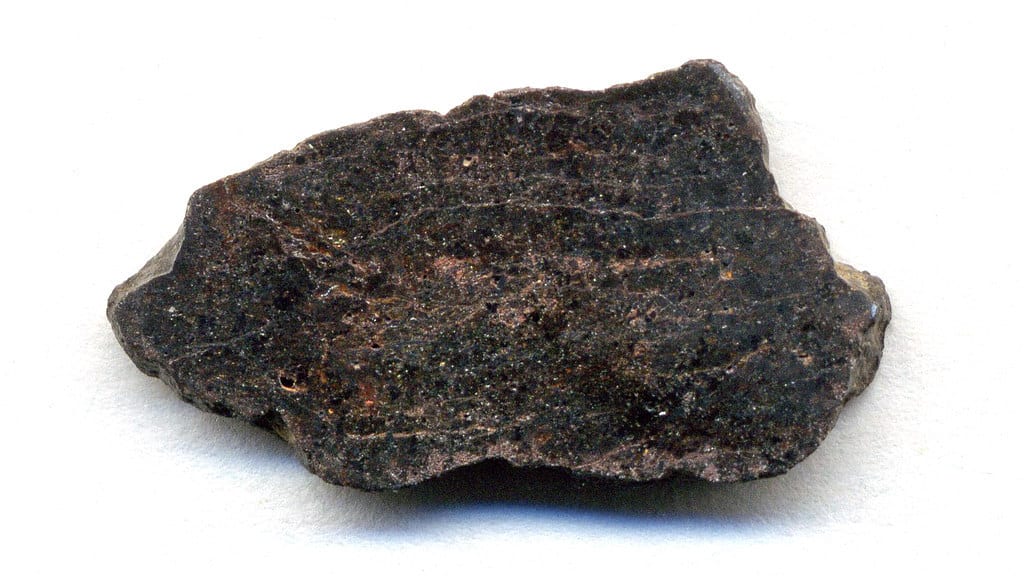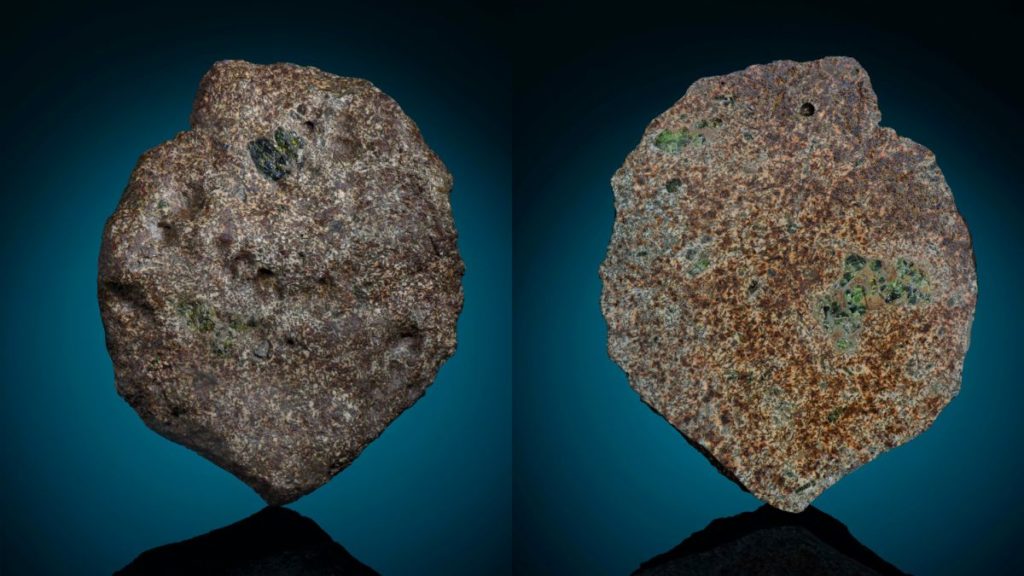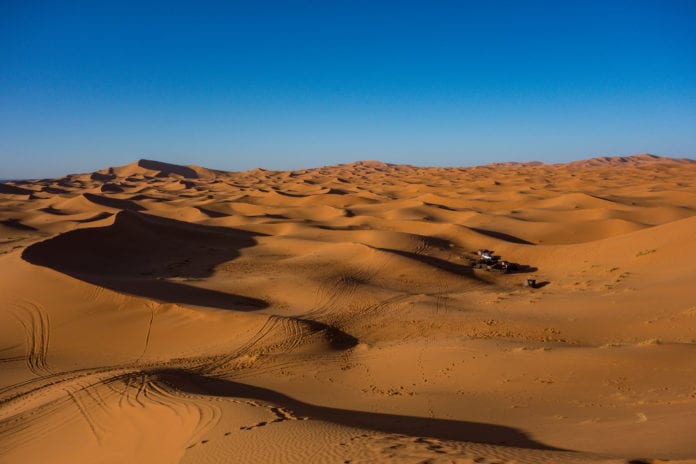A meteorite that landed last year in the Sahara desert was found to be older than Earth, with an age of 4.6 billion years. After careful study of the rock, it was concluded that the meteorite originated in the early solar system from the crust of a protoplanet. A protoplanet is a large and rocky body that is in the process of becoming a planet.
The meteorite named Erg Chech 002 (EC 002) is most likely a rare surviving piece of a protoplanet that was either destroyed or absorbed by larger rocky planets during the formation of the solar system. This also explains why it’s older than Earth itself.
Meteorite EC 002 is an achondrite, a kind of meteorite that originates from a planetary body with a distinct core and crust, and lacks chondrules (round mineral grains). The older than Earth meteorite was found in Adrar, Algeria in May last year. According to the Lunar and Planetary Institute (LPI), the pieces of EC 002 were coarse graned, tan and beige and were studded with green, yellow-green, and yellow-brown crystals.

The older than Earth meteorite
Radioactive versions of aluminium and magnesium revealed that the parent of the meteorite was a very old body dating to 4.566 billion years ago, which is older than Earth. The chemical composition of EC 002 indicated that it came from a partly melted magma reservoir in the crust of the parent body.
The observations were surprising because most rocky meteorites emerge from bodies with basaltic crusts – rapidly cooled lava which is rich in magnesium and iron. Unlike this, EC 002’s chemical composition pointed towards the fact that the crust of its source was made up of andesite, which is rich in silica.
The authors of the study said, “This meteorite is the oldest magmatic rock analyzed to date and sheds light on the formation of the primordial crusts that covered the oldest protoplanets.”
Even though EC 002 is rare, other studies say that such silica-infused andesite crusts were common during the formation of the protoplanet stage of our solar system. The authors wrote, “It is reasonable to assume that many similar chondritic bodies accreted at the same time and were capped by the same type of primordial crust.”

But when the researchers studied wavelength patterns in the light emitted by distant cosmic objects and compared them to EC 002, they realized that there is nothing common between them. In fact, even after they compared it to 10,000 objects in the database of Sloan Digital Sky Survey, they came to the same result. They wrote, “No object with spectral characteristics similar to EC 002 has been identified to date.”
According to the study, most protoplanets that are much older than Earth did not make it past infancy during the volatile period of planetary birth of our solar system. They may have collided with other rocky bodies and gotten smashed to pieces or were absorbed by larger rocky planets like Earth and Mars. A few traces that were left behind are now found as meteorites, like EC 002.
The scientists noted, “Remains of primordial andesitic crust are therefore not only rare in the meteorite record, but they are also rare today in the asteroid belt.”
Further Reading:


